Residential Builder Tips: Maximize Small Lot Spaces Creatively
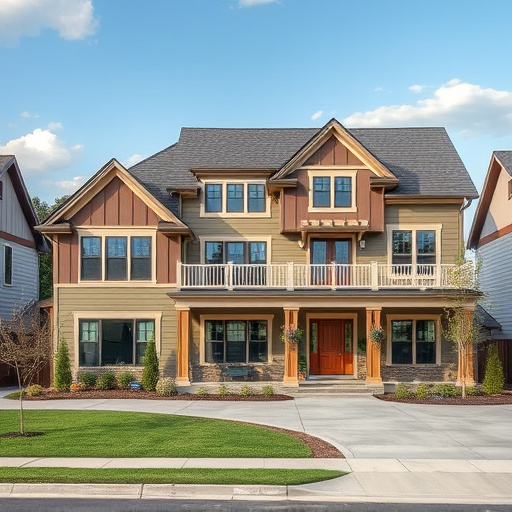
Residential builders harness creative design and strategic renovations for small lot spaces, craftin…….
Welcome to an extensive exploration of the world of residential builders, a vital component of the construction industry that has evolved significantly over time. This article aims to guide you through the multifaceted role these professionals play in creating and shaping homes, neighborhoods, and entire communities. From their historical roots to modern innovations, we will delve into the impact of residential builders on various aspects of our lives, economies, and environments.
Definition: A residential builder, also known as a housing constructor or homebuilder, is an individual or company specializing in designing, constructing, and developing residential properties, primarily single-family homes, apartments, condominiums, and townhouses.
Core Components:
Design and Planning: This involves architectural design, creating blueprints, and obtaining necessary permits to ensure compliance with local building codes.
Construction Management: Builders oversee the physical construction process, managing labor, materials, subcontractors, and timelines. They ensure projects are completed within budget and meet quality standards.
Project Financing: Securing financing for residential projects is crucial. Builders may collaborate with lenders, investors, or utilize their own capital to fund construction.
Marketing and Sales: Effective marketing strategies are essential for attracting potential homebuyers. This includes advertising, listing homes, hosting open houses, and negotiating sales.
Community Development: In larger-scale projects, builders contribute to community development by creating master-planned neighborhoods with amenities like parks, schools, and recreational facilities.
The influence of residential builders transcends national borders, as evidenced by several global trends:
Urbanization: Rapid urbanization in developing countries has led to a surge in demand for residential housing. Builders are adapting to meet this need, focusing on high-density apartment complexes and mixed-use developments.
Sustainable Construction: Environmental consciousness is driving the adoption of eco-friendly building practices worldwide. Many builders are incorporating green technologies, energy-efficient appliances, and sustainable materials into their projects.
Off-Site Construction (Modular Homes): Pre-fabricated modular homes are gaining popularity globally due to their speed of construction, reduced waste, and lower costs. This trend is particularly prominent in North America and Europe.
Smart Homes: The integration of smart technology into residential properties is a growing trend, offering homeowners enhanced convenience, security, and energy efficiency.
The residential construction market fluctuates with economic conditions, cycles of growth and recession influencing housing starts, sales volume, and average home prices. Post-recession recoveries often see a boom in new residential projects.
Real estate investment is a significant driver of the residential builder industry. Private equity firms, pension funds, and individual investors participate in residential construction as a long-term investment strategy.
Residential builders contribute substantially to gross domestic product (GDP), employment, and tax revenues. The industry supports various related sectors, including materials manufacturing, plumbing, electrical contracting, and interior design.
Technology plays a pivotal role in transforming the residential building process:
Building Information Modeling (BIM): BIM software allows builders to create detailed 3D models of buildings, improving visualization, coordination, and cost estimation accuracy. It enhances collaboration among project stakeholders.
Virtual Reality (VR) and Augmented Reality (AR): These immersive technologies enable clients to virtually tour homes, helping them make informed purchasing decisions and enhancing the sales experience.
Internet of Things (IoT) Home Automation: IoT devices integrate into smart homes, allowing homeowners to control lighting, temperature, security, and appliances remotely via mobile apps or voice assistants.
Pre-Fabrication and 3D Printing: Modular construction techniques and 3D printing of building components offer faster construction times, reduced waste, and cost savings.
The residential building industry is subject to various policies and regulations that vary by region:
Building Codes and Standards: Local governments enforce building codes governing structural safety, fire protection, plumbing, electrical systems, and energy efficiency. Compliance with these standards is mandatory.
Zoning Laws: These laws regulate land use and determine permitted building types, densities, and setbacks in specific areas, impacting residential development patterns.
Environmental Regulations: Builders must adhere to environmental protection rules, including waste management, water conservation, and air quality guidelines, especially in ecologically sensitive areas.
Licensing and Permitting: Professional licensing is common for builders, ensuring they meet education, experience, and competency requirements. Obtaining building permits is necessary before starting construction.
Despite its significance, the residential builder industry faces several challenges:
Labor Shortages: Skilled labor shortages in certain regions can lead to delays and increased costs, particularly as the industry demands a diverse range of tradespeople.
Material Price Volatility: Fluctuations in material prices, especially for lumber, impact project budgets and profit margins, requiring builders to carefully manage procurement.
Regulatory Compliance: Keeping up with evolving building codes and regulations can be challenging, often requiring ongoing training and investment in new technologies.
Sustainability Criticisms: Some critics argue that the industry’s focus on quick profits can lead to environmentally irresponsible practices, despite growing adoption of sustainable construction methods.
Strategies for Overcoming Challenges:
Skills Development Programs: Collaborating with educational institutions to create specialized training programs addresses labor shortages by fostering a skilled workforce.
Long-Term Material Procurement: Builders can mitigate material price volatility by securing long-term supply agreements and utilizing alternative sourcing options.
Digitalization and Automation: Implementing BIM, IoT, and other digital technologies streamlines processes, improves efficiency, and enhances regulatory compliance.
Promoting Sustainable Practices: Industry associations and government incentives can encourage builders to adopt green building standards, ensuring environmental responsibility.
This California-based builder has gained recognition for its sustainable, affordable housing developments. By adopting modular construction techniques and energy-efficient appliances, they reduced construction times and costs while minimizing environmental impact. Green Valley’s focus on community engagement and offering diverse housing options attracted a wide range of buyers, demonstrating that sustainability and affordability can go hand in hand.
Based in Asia, Skyline International has successfully navigated the challenges of urban high-rise development. They utilized advanced BIM software to coordinate complex designs and ensure structural integrity. Skyline’s comprehensive marketing strategies, targeting both local and international investors, contributed to their success in creating iconic mixed-use developments that enhance city skylines.
The residential builder industry is poised for growth and innovation:
Smart Home Integration: As smart home technology becomes more accessible, builders will increasingly incorporate these features as standard amenities, attracting tech-savvy homebuyers.
Micro Homes and Tiny Houses: There is a growing trend towards smaller, more efficient homes, appealing to younger buyers and those seeking cost-effective living solutions.
Off-Grid and Sustainable Living: With a renewed focus on environmental sustainability, builders are exploring off-grid housing options, incorporating solar panels, wind turbines, and water recycling systems.
Digital Twin Technology: Creating digital replicas of physical structures enables builders to simulate energy performance, identify design flaws, and optimize construction processes before actual building begins.
Residential builders play a pivotal role in shaping our communities, defining our living spaces, and contributing to economic growth. From historical beginnings to modern innovations, their work reflects changing societal needs, technological advancements, and environmental consciousness. As we look ahead, the industry’s future promises exciting developments, addressing challenges while embracing new trends.
Q: What qualifications do I need to become a residential builder?
A: Requirements vary by region, but typically include a high school diploma or equivalent, completion of an apprenticeship program (often in partnership with a trade union), and obtaining a professional license through passing exams demonstrating competency in various construction-related fields.
Q: How do I start a career in residential construction?
A: Begin by researching apprenticeship programs available in your area, gaining on-the-job training while earning a living. Alternatively, pursue formal education at vocational schools or community colleges, focusing on construction management, architectural design, or specific trades like carpentry or electrical work.
Q: What are the latest trends in residential interior design?
A: Current trends include open floor plans, natural material choices (wood, stone), accent walls with unique finishes, smart home integrations, and minimalist aesthetics with a focus on functionality and well-being.
Q: How can builders ensure their projects are environmentally sustainable?
A: Builders can adopt green building practices by utilizing energy-efficient appliances, implementing water conservation measures, selecting eco-friendly materials, incorporating natural lighting and ventilation, and considering renewable energy sources like solar panels.
Q: What role does technology play in reducing construction waste?
A: Technology, such as BIM software, helps builders optimize material usage, minimize waste by identifying design flaws before construction, and facilitate recycling and reuse of materials on-site, contributing to more sustainable building practices.

Residential builders harness creative design and strategic renovations for small lot spaces, craftin…….
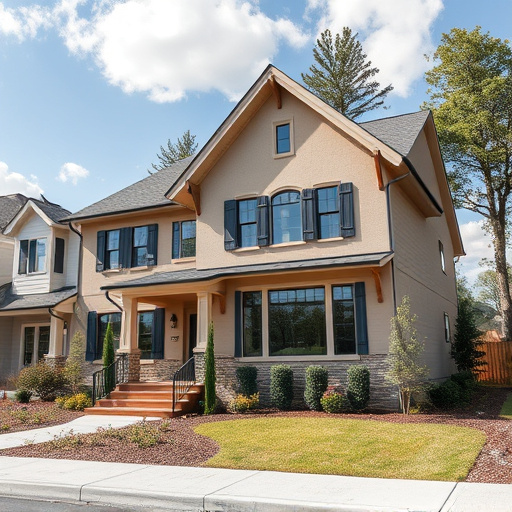
Subcontractors are essential for residential builders, contributing specialized skills for project c…….

Residential builders are increasingly prioritizing energy efficiency in response to growing demand f…….
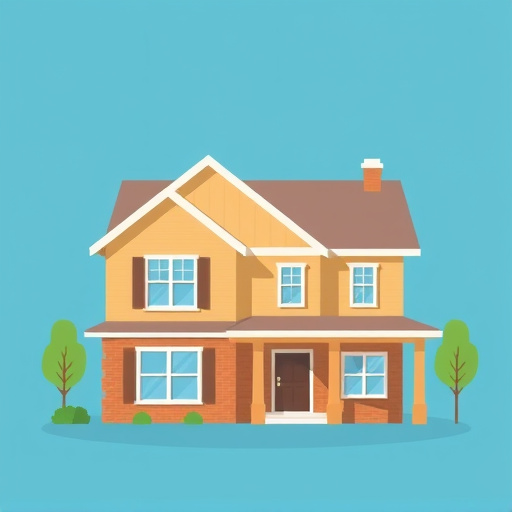
Residential builders play a pivotal role in promoting sustainable living through innovative building…….
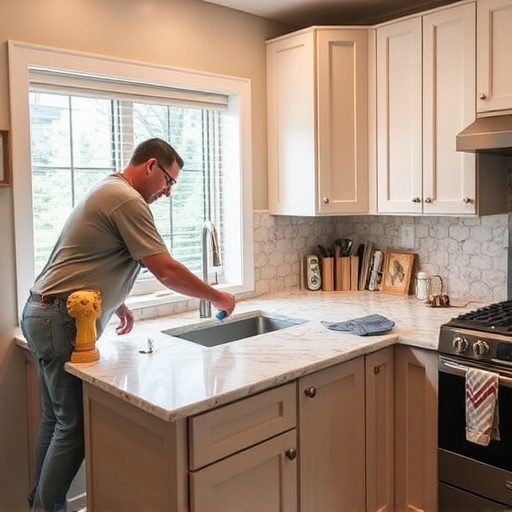
Residential builders key to floor plan customization, focusing on understanding client needs through…….

Define your home renovation needs and aspirations, creating a clear list of must-haves. Research pot…….

Residential builders are integrating smart home technology to meet evolving homeowner demands and st…….

Residential builders adapt strategies based on location, catering to urban and suburban demands. In…….
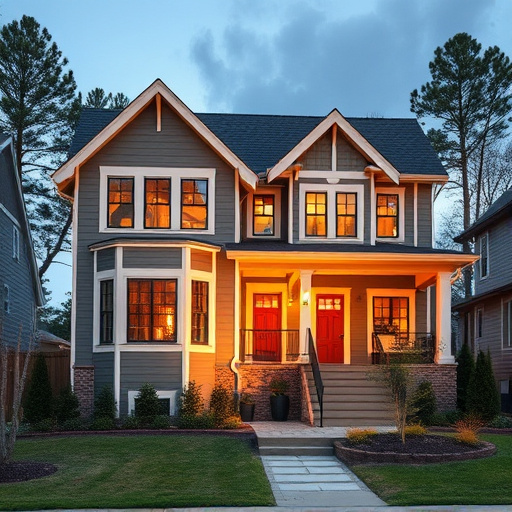
Residential builders play a crucial role in bringing client visions to life through open communicati…….
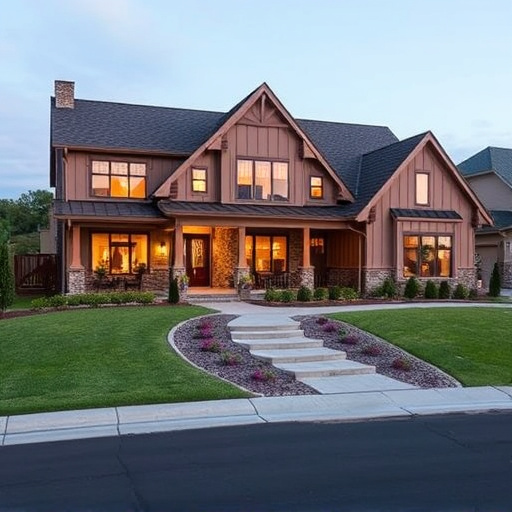
Residential builders face diverse local codes and regulations that require meticulous understanding…….